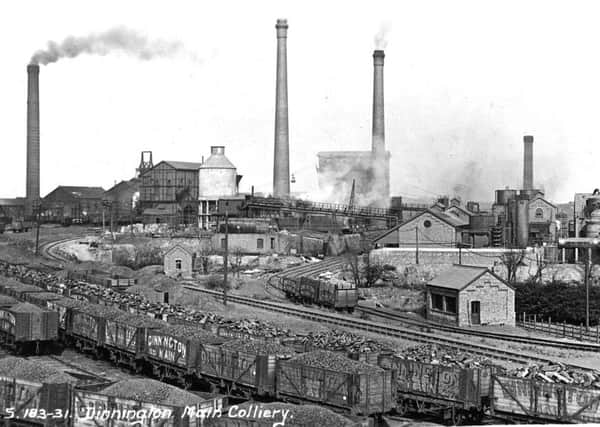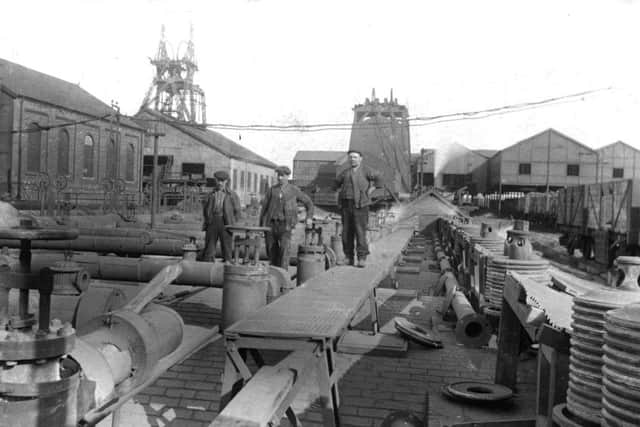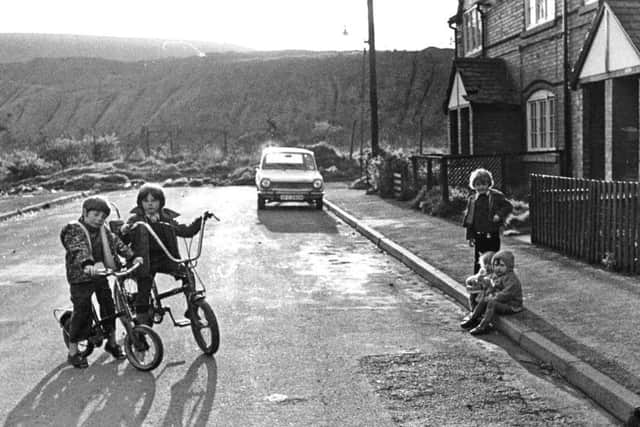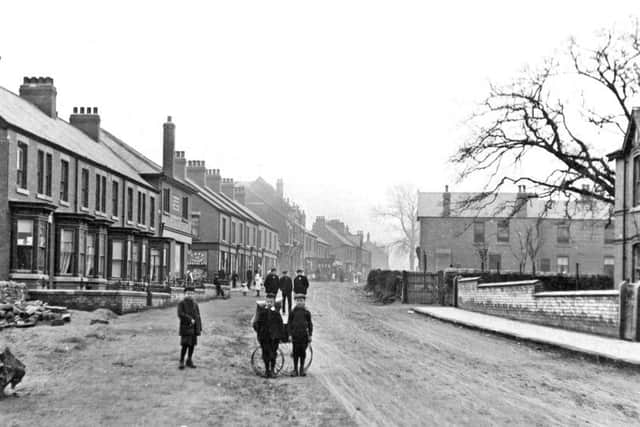Nostalgia on Tuesday: Waves of progress


Interestingly, it was argued that the owners of rich minerals could not be expected to preserve the rural virtues of the land when untold wealth was beneath their landed estates, and they had a chance of greatly increasing their wealth. Many South Yorkshire landowners had resisted the advances of the wave for a time but the temptation to reap financial rewards whilst the opportunity was available had proved too strong for the majority. The end result was that tall smoke shafts and ugly waste heaps were appearing within view of some of the most elegant local country mansions.
If the development of collieries detracted from the beauty of the countryside, it was argued, this was compensated by the increase in its productivity, boosting the wealth of the district and the nation.
Advertisement
Hide AdAdvertisement
Hide AdAt the beginning of the 20th century, Dinnington, 12 miles east of Sheffield and 16 from Doncaster was largely reliant on agriculture to sustain its small economy. All this was to change following the formation of the Dinnington Coal Co. in November 1900 by the Sheffield Coal Co. and the Sheepbridge Coal & Iron Co. With a capital of £187,000, the company was to work some 7,000 acres. The Dinnington colliery was one of a series of undertakings which would eventually open up a large coalfield to the east of Sheffield.


Sinking at Dinnington began in 1902 and by September 1903 one shaft was down nearly 300 yards and a second one nearly two hundred yards.
The Barnsley seam, 668 yards from the surface, was reached in one of the two shafts during August 1904 after 23 months’ sinking. This was celebrated on Saturday afternoon 3rd September 1904 at a dinner given by the Sheepbridge and Birley Colliery Companies to the 350 sinkers and surface men who were then employed at Dinnington. A large marquee was erected in a field and there the dinner was served by Mr and Mrs E. Ward of the Falcon Inn. The Colliery chairman mentioned that the sinkers had to deal with 20,000 gallons of water per hour. He added, they had brought the railway into the vicinity, which would not have been constructed unless the Dinnington Main Colliery Company had sunk a pit.
In December 1905 it was reported Dinnington had sent 848 tons of coal to Hull for the export trade and in total, since beginning operations, had sold 3,256 tons at the Yorkshire coast.
Advertisement
Hide AdAdvertisement
Hide AdDuring July 1906 house and commercial property building operations were in full swing at Dinnington. New schools to accommodate 1,500 children were being built in Doe Quarry Lane by Messrs Denholme, Wakefield. The alterations to the church and Falcon Inn were proceeding well, whilst in the outlying district of Silverdale, Lordon’s Hill and Dinnington Common, many houses were being completed. It was estimated that over the previous 12 months there had been accommodation provided for 1,000 people, and that this figure would double in the ensuing year.


By November 1906, the colliery’s daily output of coal had reached 1,000 tons and coal was moved via a spur connecting to the South Yorkshire Joint Line Committee Railway. The latter was formed in 1903, between the Great Central Railway, the Great Northern Railway, the Lancashire & Yorkshire Railway, the Midland Railway, and the North Eastern Railway to oversee the construction of a new railway to serve a large number of collieries as well as providing passenger services.
There was a modern brick-making plant established at Dinnington colliery in 1912, with a capacity for turning out bricks at the rate of 3,000,000 a year. Coke ovens were also established at this time using coal from the Barnsley Seam.
During 1927, Dinnington was one of the collieries which made up the Yorkshire Amalgamated Collieries Ltd, absorbed in Amalgamated Denaby Collieries nine years later. Extensive alterations began at the colliery from 1960. Besides the Barnsley Seam, Dinnington worked the Swallow Wood and Haigh Moor seams and a proportion of this coal was supplied to nearby British Steel Corporation plants.
Advertisement
Hide AdAdvertisement
Hide AdDinnington Colliery was graced with a visit from Coal Board Chairman, Sir Derek Ezra, centre, on 23 August 1979. He was there to look at improvements which had recently taken place. He said Dinnington was a good example of the NCB’s multi-million scheme to ‘build a new industry out of an old one.’


Saturday, February 16, 1991, was a very sad day for the Dinnington community as miners at the pit reluctantly agreed to accept British Coal’s plans for closure.
Dinnington Main colliery NUM Branch Secretary Ged Wilbourne, said: ‘We felt the pit had a future but the political climate has forced its closure. We have gone through a rough period but we now have one of the best faces of coal ever. We have six years reserves of coal left.’
On Friday October 11, 1991 it was announced ‘the colliery...ceased production last Friday’ and Dinnington community’s mining heritage was to be celebrated with a special church service.
Advertisement
Hide AdAdvertisement
Hide AdDuring May 2000 the old 100 acre Dinnington colliery site was labelled one of the region’s biggest eyesores. But, Rotherham Council had approved the first part of plans by the government agency Yorkshire Forward to turn the old pit into a prime development site.